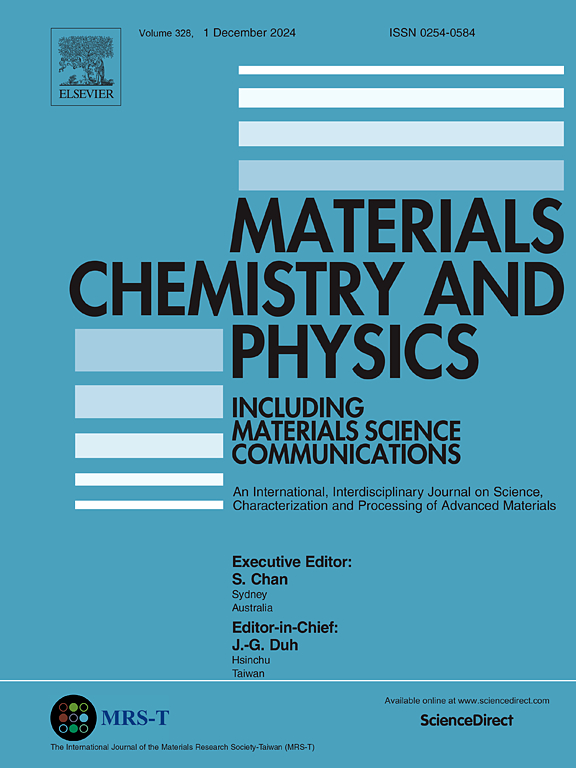Regulate the Na content for structurally stable and high-performance sodium ion batteries
IF 4.3
3区 材料科学
Q2 MATERIALS SCIENCE, MULTIDISCIPLINARY
引用次数: 0
Abstract
The P2-type Ni/Mn layered oxide is a promising cathode material due to its high specific capacity and unique two-dimensional Na+ diffusion path. However, some drawbacks such as P2-O2 irreversible phase transition during charging/discharging, Na+/vacancy ordering transition, and poor air stability have seriously affected its commercialization. Based on above problems of layered oxides, a series of cathode materials NaxLi0.13Ni0.20Mn0.67O2 (x = 0.6, 0.7, 0.8, 0.9, 1.0) with different sodium contents are prepared, correspondingly investigating the effect of sodium content on the crystal structure and electrochemical performance of cathode materials. The results show that the crystal structure is unstable and prone to P2-O2 irreversible phase transition when the sodium content is low. But the higher sodium content easily to bring Na+/vacancy ordering transition. Besides, the higher sodium content leads to poor air stability of cathode materials, which is not easy for subsequent wafer preparation and storage. Compared with other sodium content samples, the Na0.8 possesses the best cycling stability, which does not undergo P2-O2 irreversible phase transition and Na+/vacancy ordered transition, and the capacity retention rate is as high as 93.32 % after 100 cycles. The air stability of Na0.8 is also excellent, with the unbroken crystal structure, without impurity increasing on the surface, and still maintaining satisfactory cycling stability after exposed for 72 h in the air. This paper develops a new idea for the design of layered oxide cathode materials for sodium-ion batteries, and also provides a research basis for the effect of sodium content on the structure and performance of the materials.
调节钠含量,实现钠离子电池的结构稳定和高性能
p2型Ni/Mn层状氧化物具有高比容量和独特的二维Na+扩散路径,是一种很有前途的正极材料。但充放电过程中P2-O2不可逆相变、Na+/空位有序转变、空气稳定性差等缺点严重影响了其商业化。针对上述层状氧化物存在的问题,制备了一系列不同钠含量的正极材料NaxLi0.13Ni0.20Mn0.67O2 (x = 0.6, 0.7, 0.8, 0.9, 1.0),研究了钠含量对正极材料晶体结构和电化学性能的影响。结果表明,当钠含量较低时,晶体结构不稳定,容易发生P2-O2不可逆相变。但较高的钠含量容易带来Na+/空位有序转变。此外,高钠含量导致正极材料的空气稳定性差,不便于后续的晶圆制备和储存。与其他含钠样品相比,Na0.8具有最佳的循环稳定性,不发生P2-O2不可逆相变和Na+/空位有序转变,循环100次后容量保持率高达93.32%。Na0.8的空气稳定性也很好,晶体结构不破碎,表面不增加杂质,在空气中暴露72 h后仍保持令人满意的循环稳定性。本文为钠离子电池层状氧化物正极材料的设计开辟了新的思路,也为钠含量对材料结构和性能的影响提供了研究依据。
本文章由计算机程序翻译,如有差异,请以英文原文为准。
求助全文
约1分钟内获得全文
求助全文
来源期刊

Materials Chemistry and Physics
工程技术-材料科学:综合
CiteScore
8.70
自引率
4.30%
发文量
1515
审稿时长
69 days
期刊介绍:
Materials Chemistry and Physics is devoted to short communications, full-length research papers and feature articles on interrelationships among structure, properties, processing and performance of materials. The Editors welcome manuscripts on thin films, surface and interface science, materials degradation and reliability, metallurgy, semiconductors and optoelectronic materials, fine ceramics, magnetics, superconductors, specialty polymers, nano-materials and composite materials.
 求助内容:
求助内容: 应助结果提醒方式:
应助结果提醒方式:


